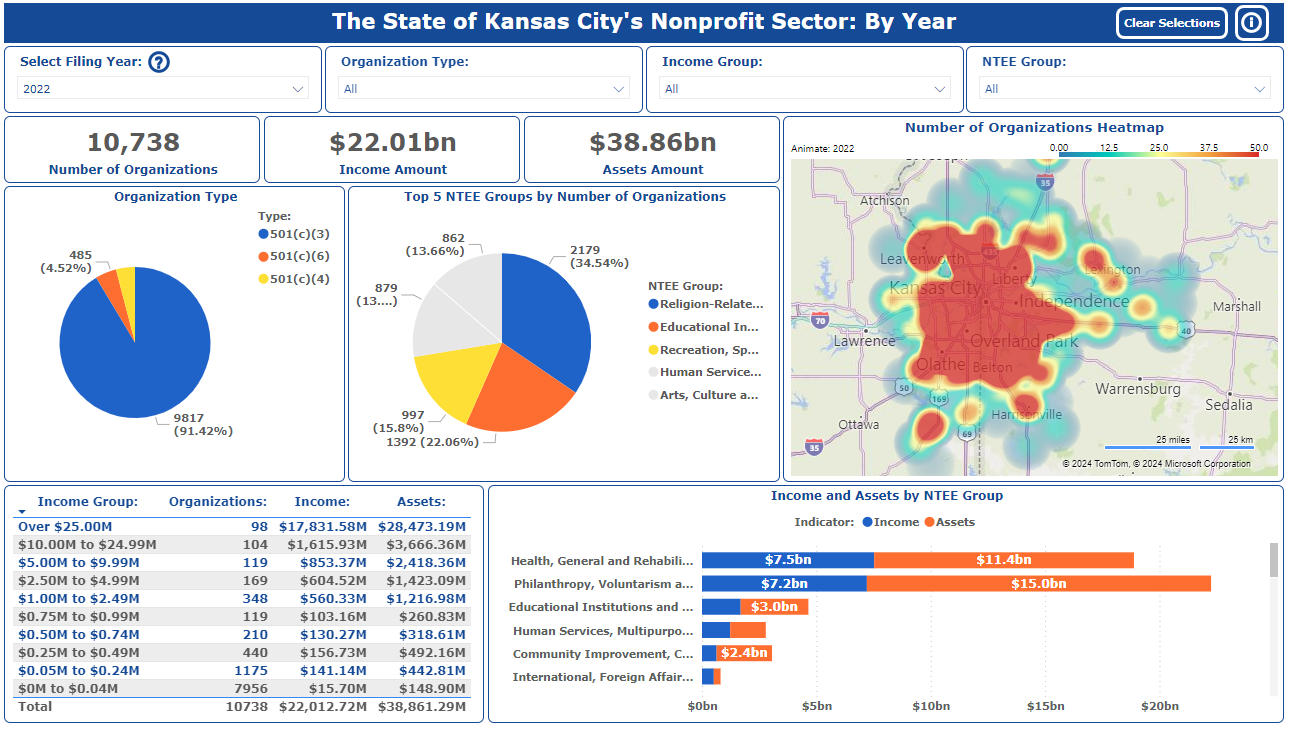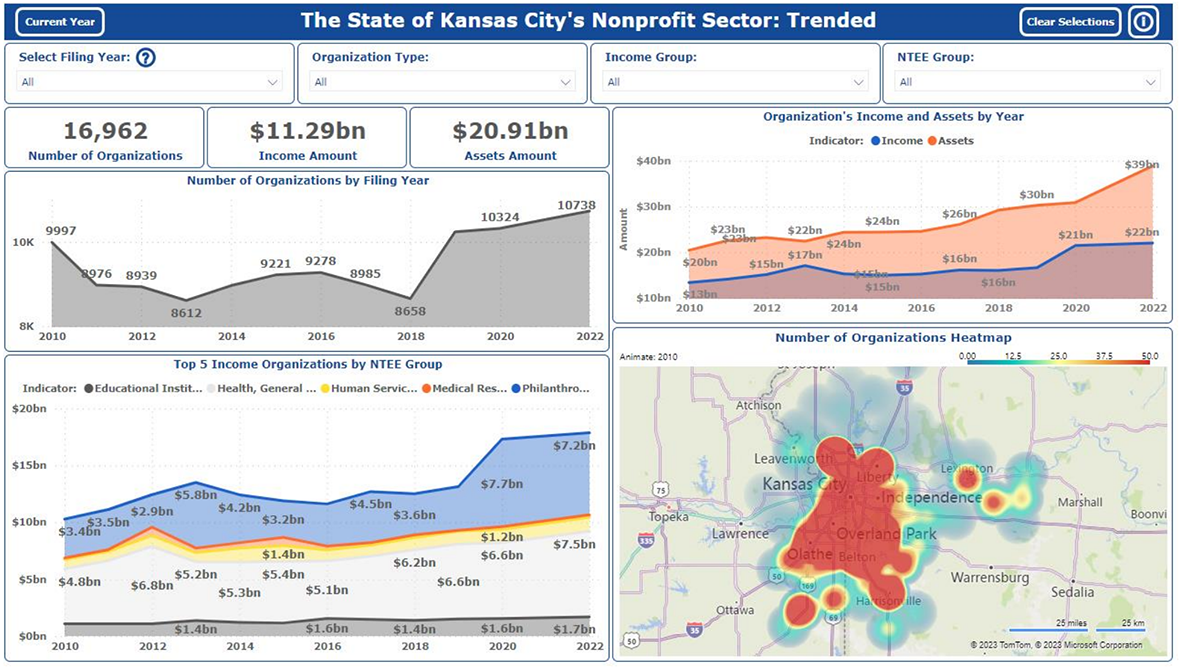The State of Kansas City’s Nonprofit Sector
10,738 Nonprofit Organizations
$22.01 Billion in Revenue Generated by Nonprofits
The State of Kansas City’s Nonprofit Sector By Year
View a snapshot of the most current IRS data for the nonprofit sector in Kansas City.

Trended Data for Kansas City’s Nonprofit Sector
Explore trends in Kansas City’s nonprofit sector since 2010.

History of the State of the Nonprofit Sector in Kansas City Report
The Midwest Center for Nonprofit Leadership launched its first report on the State of Kansas City’s Nonprofit Sector in 2002 and has been consistently publishing this report annually ever since. The first published report came to life thanks to the collaboration of Scott Helm, Jill S. Cook, and David O. Renz and was titled Building a Healthy Community Through Nonprofit Service: A Snapshot of the Kansas City Nonprofit Community. In addition to Kansas City Metropolitan area statistics, the report includes other metropolitan areas for nonprofit sector comparisons.
Data Disclaimers and Limitations
Due to the limited nature of Internal Revenue Services (IRS) data storage practices of historical Exempt Organizations Business Master Files, also commonly referred to as EO BMF, the raw data for the report was extracted from the Urban Institute: National Center for Charitable Statistics. (Important: to access raw data files please follow this link to the Urban Institute website:
IRS Business Master File).
*The State of Kansas City’s Nonprofit Sector Report dashboard is currently missing data for 2021 due to the IRS stated delayed data updates. The statement reads: “Expect delays in data updates for the Tax Exempt Organization Search tool. We are still processing paper-filed 990 series received 2021 and later” (Internal Revenue Service, 2023). Nonprofit data for 2021 will be added to the tool once the IRS processes all 990 series.
The raw IRS nonprofit data, on which this report is based, contains a large number of inaccuracies, which significantly increases the margin of error. Several research publications address issues with the IRS data accuracy:
- Brass JN. Why do NGOs go where they go? Evidence from Kenya. World Development. 2012; 40; 2: 387-401. 10.1016/j.worlddev.2011.07.017
- Froelich KA, Knoepfle TW. Internal revenue service 990 data: Fact or fiction?. Nonprofit and Voluntary Sector Quarterly. 1996; 25; 1: 40-52. 10.1177/0899764096251004
- Gordon TS, Khumawala S, Kraut MA, Meade JA. The quality and reliability of form 990 data: Are users being misled?. Academy of Accounting and Financial Studies Journal. 2007; 11: 27
- Lampkin LM, Boris ET. Nonprofit organization data: What we have and what we need. American Behavioral Scientist. 2002; 45; 11: 1675-1715. 10.1177/0002764202045011005
- Ely, T. L., Calabrese, T. D., & Jung, J. (2023). Research Implications of Electronic Filing of Nonprofit Information: Lessons from the United States’ Internal Revenue Service Form 990 Series. Voluntas: International Journal of Voluntary & Nonprofit Organizations, 34(1), 20–28. https://doi.org/10.1007/s11266-021-00398-8
Although Midwest Center for Nonprofit Leadership performed all necessary data preparation and cleaning processes to minimize margin of error, there is room for improvement. We strive to deliver accurate data and constantly improve our techniques to recognize data inaccuracies.



